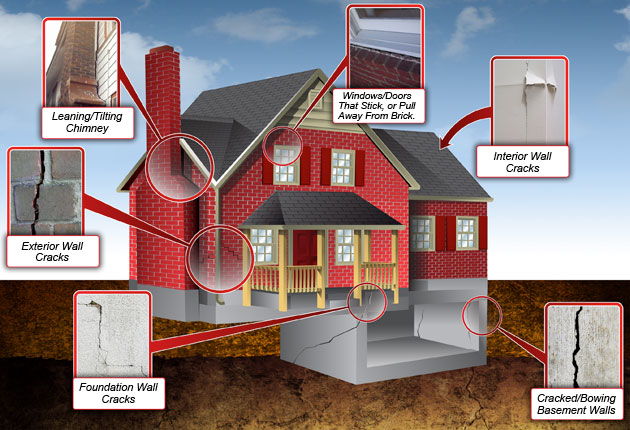In the midst of Houston deciding whether to actually host a winter this year, we can’t forget to prepare for the soon-approaching spring and summer, as fickle and sticky as they are. As fireplaces grow cold and cleaning products resurface in your home, the health of your home foundation should be top-of-mind when ushering in a new season. Below are tips to spot common problems before requesting a free home foundation repair quote.
Fighting a failing home foundation:
When pinpointing problems within a home’s structure, the devil is always in the details. In order to catch any foundation issues, scrutinize every in- and outdoor detail of your house. Signs of home foundation problems include:
- Cracks that appear at the intersection of walls and ceilings and in the corners of each room. Specifically keep an eye out for diagonal cracks in interior walls that expand to the corners of doors and windows.
- Cracks below the siding or brick along the perimeter of your home
- Separations of wood trim at the exterior corners of your home above the brick
- Eyeball your foundation floors,- or even use a level -because they should not rise or sink in any area.
- Both windows and doors should close properly. It will be easy to spot gaps between ill-fitting door and window framing.
Foundations in Houston are constantly fighting and flexing with the clay soil that’s found in our area. The city is known for its dark gumbo clay that either expands dramatically when soaked or dries up and contracts like a prune in extreme heat. The end result? Well, your home’s foundation is taken on a constant, up-and-down ride. Fortunately, there’s a few things you can do to maintain a home’s foundation before spring, and year-round for that matter.
1. Soaker hoses and sprinkler systems: Besides maintaining an envious, lush yard, soaker hoses and sprinklers maintain a constant level of moisture, minimizing your foundation’s movement.
2. Weekly check up: Once a week, make it a routine to take a walk around the outside of your house, and measure increases of the width and length of any cracks. Also make sure that any soil is sloping away from your home. In this case, you can prevent water from ponding, an instance where water pools, stops draining properly, and up-heaves the home foundation above its original elevation.
3. Root barriers: Since trees surrounding your home can each slurp 100 to 600 gallons of water each day, they definitely impact the expansion and contraction levels of the clay soil around and under your home’s foundation. A root barrier is a physical separation between tree roots and the soil you don’t want them to infiltrate. The barrier diverts root growth downward, versus them expanding laterally and decreasing the moisture levels around your home. (See picture below)
In the video below, Michael Gray, a structural engineer in Houston, illustrates the basics when it comes to installing root barriers for Houston home foundation repair:
Hey Houston, do you have any home foundation repair questions for your slab?
U.S. Foundation Repair is a locally-owned, Houston business that guarantees expert knowledge and assistance when it comes to the state of your home’s slab. Please contact us for a free inspection.



